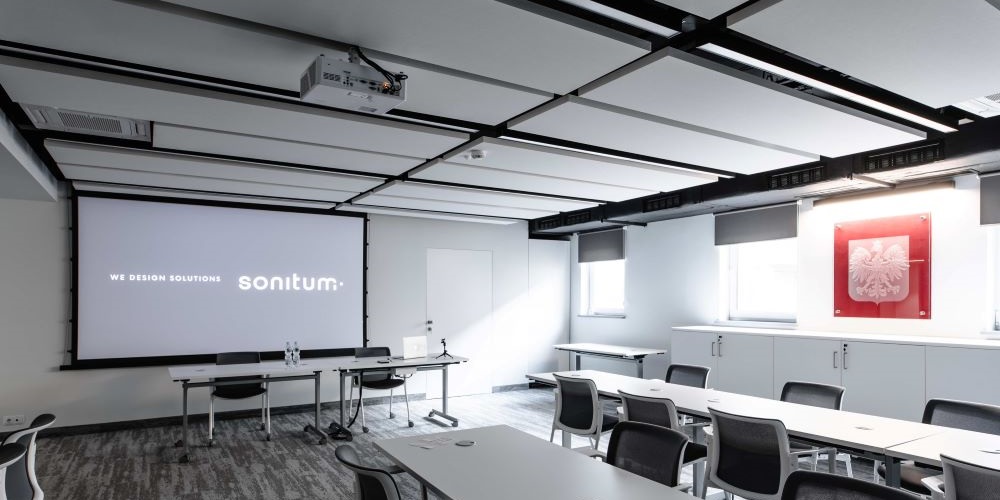Problem-solving is in the nature of the systems integrator. There are the common technical issues of faulty cables and blank screens that are typically quick fixes. On the opposite side, there are the new challenges of a fast-emerging trend or an unexpected shift in user experiences. Those require a more wholesale change.
Hybrid working and learning have introduced enormous challenges to integrators that serve the corporate and education AV verticals. These hybrid experiences birthed from the pandemic brought the double whammy of being both a trend and a user-experience shift that almost literally appeared overnight.
 We tend to think of video as the area that requires problem-solving — and that’s true in most cases. In fact, integrators have increasingly brought PTZ cameras with wider fields of view into the hybrid meeting space and classroom. The challenge is to make the remote participant feel equal to those who are physically present in the room. Integrators are adding cameras where remote workers and students can see what’s happening inside the room. And, often, they’re building out spaces with new USB and wireless solutions to simplify video transport.
We tend to think of video as the area that requires problem-solving — and that’s true in most cases. In fact, integrators have increasingly brought PTZ cameras with wider fields of view into the hybrid meeting space and classroom. The challenge is to make the remote participant feel equal to those who are physically present in the room. Integrators are adding cameras where remote workers and students can see what’s happening inside the room. And, often, they’re building out spaces with new USB and wireless solutions to simplify video transport.
However, our new hybrid world has shone the spotlight on audio and how quickly things escalate with audio performance as the core problem.
The Power of Speech
The common goal of the hybrid meeting is to create an atmosphere in which everyone has authentic interaction, even when they’re not in the same room. Speech is paramount to learning, and the real challenge of remote learning is to hear instruction clearly and to have clear student participation. Problems exist inside the classroom, such as noise coming through the remote student’s microphone. There is also the problem of students speaking over each other, regardless of where they’re located. These examples just scratch the surface of the potential audio problems on both sides.
The most immediate problem requiring attention involves the often-oversimplistic existing technology infrastructure. Many meeting and learning spaces had little more than standard webcams. Although these cameras could bring video and audio to remote participants, they couldn’t capture clear audio from the physical environment. Even with the presence of microphones in the room, simply capturing and streaming the audio was insufficient to address an unforeseen, but critical, need: creating intelligible speech for the remote audience.
This brings us to the number-one challenge relative to hybrid-audio quality — namely, acoustics. Large conference rooms and student lecture halls are spacious and boomy, and audio can be difficult to understand. The traditional classroom is typically boxy, with hard, reflective surfaces. Sound reverberates as it bounces off the windows and walls. Sound isolation and acoustical treatments are essentially nonexistent across most learning spaces.
New Acoustical Challenges
Modern conference-room designs, although often sleek and inviting, bring new acoustical challenges. There are more reflective surfaces and there’s more glass, including floor-to-ceiling windows. These surfaces intensify echo and reverberations that not only hinder speech intelligibility for listeners but also distract speakers as voice echoes back through the microphone.
 A properly mic’d room is not a cut-and-dried solution for these acoustical challenges. The microphone listens for the voice but also hears the resulting reverberations. These reverberations come into the microphone just microseconds or milliseconds after the original signal arrives. That results in reverb and/or echo and essentially makes comprehension difficult, if not impossible — especially for the remote audience.
A properly mic’d room is not a cut-and-dried solution for these acoustical challenges. The microphone listens for the voice but also hears the resulting reverberations. These reverberations come into the microphone just microseconds or milliseconds after the original signal arrives. That results in reverb and/or echo and essentially makes comprehension difficult, if not impossible — especially for the remote audience.
Tuning The Room
The DSP is generally viewed as the essential audio component behind the curtain, playing an important role in tying everything together. The DSP quietly ingests, processes and routes audio signals that ultimately reach an audience’s ears. It also increasingly operates as a core component of the central IT network infrastructure.
Microphones and ceiling speakers come to mind for most when they consider a traditional classroom-audio system. These, indeed, continue to be core, but the DSP is where intelligibility truly comes into play. The DSP tunes the room to ensure that audio quality and intelligibility are optimized, working in harmony with acoustical environments and other AV technologies in the system.
Intelligibility has risen to a new level of prominence in the hybrid era, and the DSP now has critical responsibility for two key elements of intelligibility — namely, acoustic echo cancellation (AEC) and feedback suppression.
In an audio-conferencing environment, a platform like Microsoft Teams or Zoom provides the remote connection into the physical space. Consider the simple event of a remote participant unmuting the microphone, or simply forgetting to go on mute at all.
Prioritize the Reference Signal
An AEC-enabled DSP will recognize the audio signals inside the room and coming through the speakers from remote locations, and it will prioritize the audio coming through the microphone. The AEC feature will ignore the background-audio signals interfering with what the DSP recognizes as the prioritized reference signal. This removes the echo that we have all experienced, where we can hear ourselves talking milliseconds after we have spoken. AEC eliminates, or “cancels,” that disorienting echo event.
Consider a second example where in-room microphones are opened for remote participants to hear those in the room. An unmuted remote participant may experience real-time audio reflection from events happening at the remote location. Those physically inside the room will experience disorientation from hearing themselves come through that experience. The DSP removes the echo that interferes with a high-quality conferencing experience.
 Ceiling microphones have increasingly become an important element of the hybrid architecture. This is where the DSP’s built-in auto-mixing capabilities and noise-floor settings can bring added value to instructional audio. The DSP’s auto-mixer will make the determination about which contributor the microphone should tune into, and it will automatically switch off other microphones to eliminate adjacent sounds. (Examples might include the sounds of papers shuffling or nearby conversations.)
Ceiling microphones have increasingly become an important element of the hybrid architecture. This is where the DSP’s built-in auto-mixing capabilities and noise-floor settings can bring added value to instructional audio. The DSP’s auto-mixer will make the determination about which contributor the microphone should tune into, and it will automatically switch off other microphones to eliminate adjacent sounds. (Examples might include the sounds of papers shuffling or nearby conversations.)
The DSP may be the traffic cop that processes and transports your signals. However, the DSP is also, more clearly than ever, the key to optimizing the acoustic environment in today’s classrooms, where many students are seeking a blended learning experience.
Emerging Trends Inside Physical Spaces
Two distinct approaches are now taking shape with audio conferencing in modern meeting rooms of varied sizes. Huddle spaces require less architecture, as they are smaller rooms, serving small audiences, presenting limited acoustical challenges. These rooms are typically well served by web-conferencing soundbars.
Audio problems intensify in medium-to-large collaboration rooms. There are more physical attendees, and web-conferencing soundbars will not deliver even audio dispersion throughout the room.
Beamforming microphone arrays are one of the most popular technologies being deployed by integrators today. Ceiling microphones with dynamic beamforming technology now effectively isolate the speaker from other audio events in the room, which serves to assist DSPs in filtering out reverberations.
Micro-format DSPs are also increasing in popularity for today’s IT-centric meeting spaces. It is now possible to incorporate the signal processing required to effectively integrate mic arrays into challenging room acoustic environments in a small enough form factor to sit behind a display, next to the UC appliance or under a table. Right now, there is a DSP on the market with a quarter-rack-width footprint that is easily concealed from view.
A Better Atmosphere Inside the Room
 As beamforming-microphone technologies and DSPs have now matured to create more pleasant audio experiences for the remote attendee, the latest trend is to create a better atmosphere for those inside the room. IT-friendly audio-reinforcement systems are key to doing this. In medium to larger spaces, such as conference rooms and large classrooms, this means reducing the visual presence of AV technology through compact solutions with minimal cabling and infrastructure.
As beamforming-microphone technologies and DSPs have now matured to create more pleasant audio experiences for the remote attendee, the latest trend is to create a better atmosphere for those inside the room. IT-friendly audio-reinforcement systems are key to doing this. In medium to larger spaces, such as conference rooms and large classrooms, this means reducing the visual presence of AV technology through compact solutions with minimal cabling and infrastructure.
It also means ensuring that those anywhere in the room can equally hear the presenter. CatX-connected ceiling-speaker systems coming to market this year will provide a completely modern and IT-friendly solution that addresses echo cancellation and noise reduction. Plus, they’ll deliver a more equitable audio spread throughout larger meeting spaces.
Simplifying Products to Make them Familiar
The industry is also working to simplify the management of these systems for the IT professional who’s now tasked with AV responsibilities. The industry has started to make progress in simplifying products to make them more familiar in design to IT managers.
While hardware won’t simply go away, single-wire connectivity will evolve into full-room audio systems that are installed simply by plugging in a category cable and managing these systems through a software interface. The problem-solving approach of improving meeting-audio experiences for businesses will trickle down to the IT manager ultimately responsible for operation and maintenance. As for the systems integrator, they’ll finally has the tools they need to create an overall pleasant experience for everyone involved.
For previous Commercial Integrator coverage of hybrid working and hybrid learning, check out our website archives.










